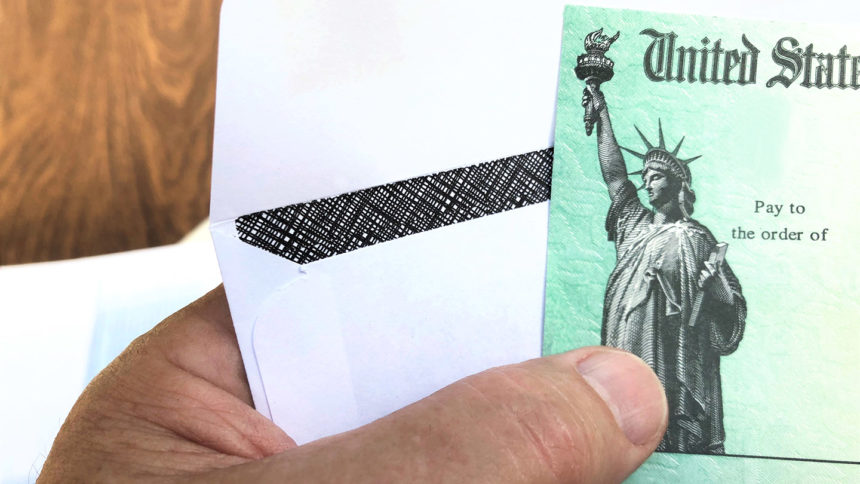[Credit: NoDerog / Getty Images]
Although senior living advocates welcomed Tuesday’s announcement about the upcoming distribution of $9 billion in Phase 4 Provider Relief Funds, they said they also want more.
The Department of Health and Human Services, through its Health Resources and Services Administration, said that eligible providers would begin receiving payments later this week, averaging $58,000 for small providers, $289,000 for medium providers and up to $1.7 million for large providers.
The funds are part of the $25.5 billion earmarked for healthcare providers to recruit and retain staff members, buy masks and other personal protective equipment, modernize facilities, and perform other activities needed to respond to COVID-19.
Approximately $8.5 billion in American Rescue Plan Rural payments were announced last month for providers who serve Medicaid, Children’s Health Insurance Program and Medicare beneficiaries.
Not enough
Senior living providers have lost billions protecting residents in assisted living communities during the pandemic, according to Argentum, which said the Biden administration continues to “ignore urgent calls” from the industry — and members of Congress — to target aid to operators.
“Today’s action by HHS is welcome news to those providers receiving much-needed COVID relief,” Argentum President and CEO James Balda said Tuesday. “However, the Biden administration is leaving behind scores of assisted living caregivers by not ensuring critical funds are targeted to the very communities who protect those most at-risk from the coronavirus and its variants.”
What seems to be a final allocation, according to American Seniors Housing Association President David Schless, caps off a two-year advocacy effort led by ASHA, Argentum and other associations representing long-term care providers. The industry, he added, “fought for inclusion, then for a meaningful level of funding, and then to save the remaining funds when Congress tried to pilfer those funds to pay for the bipartisan infrastructure bill.”
“Given the limited amount of funds remaining in the PRF, we knew the industry would not be made whole or even close to it, but these payments — as well as the rural payments made in November — will certainly be helpful as providers continue to experience increased costs associated with COVID-19 and its variants,” Schless told McKnight’s Senior Living.
A LeadingAge spokeswoman called the release of approximately half of the $17 billion Phase 4 funds intended for healthcare providers “good news,” adding that the association hopes that the remaining $8 billion will follow soon.
“Overall, our greatest disappointment is in the inadequacy of the total amount of Provider Relief Funds allocated by Congress and made available for distribution in light of the enormous outstanding need,” the spokeswoman told McKnight’s Senior Living.
LeadingAge said that the awards — averaging $58,000 for small providers, $289,000 for medium-sized providers and up to $1.7 million for large providers — only cover 45% of small providers’ lost revenues and coronavirus expenses. The amount for medium-sized providers is 25%, and for larger providers, it’s 20%.
When HHS announced that it was making $25.5 billion available to healthcare providers in early September, the American Health Care Association / National Center for Assisted Living called the funding “critical” to helping providers acquire the ongoing staff support, personal protective equipment and testing necessary to protect residents and staff and to prevent facility closures.
LeadingAge said Tuesday that provider needs are “significant” and continue to grow as the public health emergency continues and new COVID variants emerge.
“Some nursing homes, assisted living, home care and community-based service providers have been pushed to the financial brink,” the LeadingAge spokeswoman said. “If those providers close, consider the consequences, not only the loss to a community of a business and the jobs they provide and help support in other sectors, but heart-wrenching and potentially dangerous disruptions for older adults and families who must scramble to find a new care provider.”
Continued advocacy
All of the long-term care advocacy organizations McKnight’s Senior Living spoke with said they will continue to advocate for any remaining funds to be prioritized for senior living. Schless said that recent efforts have “created a new awareness for the industry and the important role we play in the overall healthcare system, which positions the industry well for future policy initiatives.”
Pointing to figures that 75% of the almost 800,000 COVID-19 deaths in the United States were among those aged 65 or more years, Argentum said it will continue to push its “Don’t Leave Us Behind…Again” campaign to rally support for the remainder of the Phase 4 payments, which are expected to be released through January.
“We have seen a groundswell of support from local and state leaders, as well as those in Congress, for our campaign,” Balda said. In a recent national poll, 86% of respondents agreed that senior living communities should receive targeted relief.
Argentum also has advocated that assisted living providers be eligible for the Phase 4 bonus payments, which are based on the amount of services provided to Medicare, Medicaid or CHIP beneficiaries. Assisted living providers don’t qualify for those bonus payments, except in rare cases when an operator might bill Medicare or Medicaid as part of an affiliated skilled nursing facility.


